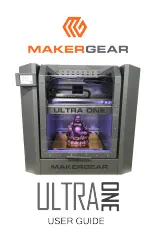
SX™
Service and Maintenance Manual 3-59
960714-02B © 2007 I2407
SECTION 3 – COMPONENT REPAIR
FILM FEED ASSEMBLY
PHOTOELECTRIC SENSOR (con’t)
Note: On older models of the SX
, the
photoelectric sensor may be wired to the
machine using an RJ11 ‘modular connector’
(the same plugs used on telephone jacks).
Simply remove this plug to disconnect the
sensor from the machine on these models.
The replacement sensor will be from the
current model, which will need to be hard wired
using the following steps.
7. Gently remove the sensor from the machine.
Pull the wire out of the machine, being
extremely
careful to not pull any other wires in
the machine that may become free.
8. Thread the new sensor wire through the
machine following the same routing the old
wire followed.
Be sure to keep the wire away
from any moving parts inside of the
machine.
9. Rewire the sensor to the terminal blocks and
breakout module following the wiring list in
Table 3-4 of the previous page.
10. Mount new sensor to the sensor bracket on the
front finger plate. To achieve proper alignment
of the sensor, position the sensor as shown in
(figure 3-150). The left screw should be
completely to the front of the slot, while the
right screw should be completely to the rear of
the slot. This will position the sensor correctly
to “see” the bag film.
11. Mount the front finger plate to the machine.
Ensure the fingers are centered in the grooves
on the film feed drive roller.
12. Power now needs to be applied to the machine
to calibrate and test the sensor.
13. Follow the procedures in the
Testing
section
(page 3-56) to ensure the new sensor has
power and is communicating with the PLC. If
the sensor passes all three tests, calibrate the
sensor using the steps in the
Adjustment
section (page 3-57).
Breakout Module
Colored Terminal Blocks
Figure 3-149. Electrical Components
TESTING
Screw
Completely
Forward
Figure 3-150. Photoelectric Sensor Positioning
Front Plate
Screw
Completely
Rearward
USE EXTREME CAUTION WHILE SERVICING
A MACHINE WHILE POWER IS APPLIED.
UNEXPECTED MACHINE STARTUP CAN
CAUSE SERIOUS INJURY.
WARNING
WHILE TESTING ELECTRICAL
COMPONENTS WITH POWER APPLIED TO
THE MACHINE, USE PROPER
TROUBLESHOOTING TECHNIQUES TO
AVOID ELECTRICAL SHOCK.
WARNING
















































